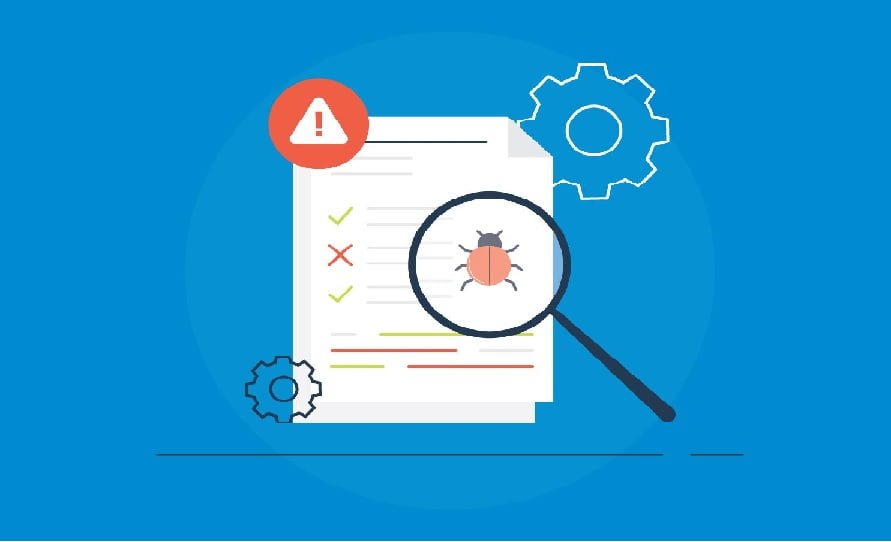Engineers spend endless hours in programming testing to find messes with that can eventually debase the nature of the product. At times these bugs can be really straightforward very difficult where the bugs can make the whole programming inert. One way or another, it is the client experience that will be impacted and this will bring about financial misfortune to the association. Remembering this reality, programming testing has turned into a necessary piece of each and every SDLC. This article will make sense of the sorts of bugs in programming testing.
What is a Software Bug?
While composing a product code, the designer might commit an error which might thwart the working of a specific component in the product. This mix-up or mistake is the bug that will make the product glitch. The justification for why such mistakes are called bugs is an issue handled by Elegance Murray Container, a notable character in figuring history. While dealing with an electromechanical PC, he experienced an issue that impacted the presentation of the PC. While searching for the issue, they found a worm caught inside the PC. From that point forward, each blunder in the product code or PC framework is known as a bug.

Different Types of Bugs in Software Testing:
No matter the software type, software bugs are classified into three types; Nature, priority and severity. In software testing, bugs are classified on the basis of their nature and impact on user experience.

- Software Bug by Nature: Software bugs have different forms where they affect the overall functioning of the software differently. Although there are dozens of such bugs currently, you might not encounter them as often. With that in mind, here are the most common software bugs classified by nature that you may encounter at some point in your software development career.
- Display Bugs: No user wants to use poorly performing software. Software bugs that lead to lower speed, stability, increased response time, and higher resource consumption are considered performance bugs. The most important sign of any such bug in the software is to analyze the loading speed or response time slower than usual. If such an indication is found, the developer can begin to diagnose a performance bug. The performance testing phase is the part of the development process where every such bug in the software is detected.
- Security bug: When using software, security is the biggest concern of the user. Poorly protected software will not only put the user’s data at risk but also damage the overall image of the organization which may take years to recover. Due to their high severity, security bugs are considered one of the most vulnerable bugs of all types. Although this is self-explanatory, security bugs can leave software vulnerable to potential cyber threats. Sometimes, the software organization may not notice such attacks, while in some cases, these attacks can cause monetary loss to the users, especially small and medium scale businesses. XSS vulnerabilities, logical errors and encryption errors are some of the common security bugs found in software. Developers pay special attention to examining the code to find any underlying security bugs to reduce the risk of cyber attacks.
- Unit Level Bugs: Unit level bugs are quite common in software development and do not cause much damage. Encountering basic logic bugs or computation errors are considered unit-level bugs. With agile the test team tests a small part of the code as a whole. The reason I prefer this testing method is to ensure that the entire code is working as it is intended to. During testing, the team may encounter unit-level bugs that can be easily fixed as the team is working with only a small amount of code.
- Functional Bugs: The software is only as good as the convenience it provides. If any functionality of a software is compromised, the number of users will start to drop drastically until it becomes functional again. A functional bug occurs when a certain feature or the entire software is not working properly due to an error. The severity of such bugs depends on the feature they are obstructing. For example, an unresponsive clickable button that is not working is not as serious as the whole software is not working. Functional testing is performed by the testing team to identify any software bugs that cause functionality errors. Once identified, the team decides its further classification and severity.
- Usability Bug: Possibly one of the most devastating bugs to software, a utility bug or defect can prevent software from working at its potential or render it completely unusable. Examples of this bug in software testing are the inability to log in to a user account or inefficient layout of the software for the user. The bottom line is that this type of defect or bug can make it complicated for the user to use the software efficiently. Developers and engineers need to look at the correct usability requirements when testing code to identify such bugs.
- Syntax errors: Syntax errors are among the most common software bug types and do not allow the application to compile properly. This bug is caused by incorrect or missing characters from the source code, which will affect the compilation. A minor error like missing brackets can cause this problem. The development or test team will become aware of this bug during compilation and will further analyze the source code to fix missing or incorrect characters.
- Compatibility errors: Whenever a software or application is not compatible with the hardware or operating system, it is considered as incompatible software or compatibility error. Finding compatibility errors is not a common practice because they may not show up in initial testing. For this reason, developers should go for compatibility testing to ensure that the software they create is compatible with common hardware and operating systems.
- Logic Bugs: One of the most frequently found bugs in software code, logic errors cause software to produce incorrect output, software crashes, or failures. more
- Priority-Based Software Bug: The most important category here is priority-based software bugs. These are based on the impact these bugs leave on business. Here, developers will analyze the bug to determine its impact and its defect priority. Later, each bug is given a timeline where it should be fixed within the stipulated time frame to minimize the bug impact on the user. Here are four types of priority-based software bugs.
- Low priority defects: Defects with low priority do not have much impact on the functioning of the application. Rather, they are more about software aesthetics. For example, a problem with the spelling or alignment of a button or text may be a low priority defect. Software testing will pass the exit criteria even if low-priority defects are not fixed, but they must be corrected prior to the final release of the software.
- Medium-priority faults: Similar to low-priority defects, medium-priority defects do not have a significant impact on software, but they should be fixed in any subsequent or upcoming releases. Such defects may not have the same effect for every user and may vary with the device as well as their specific configuration.
- High priority faults: Unlike the previous two, the exit criteria for high-priority faults are not met until the problem is resolved. Each bug in this category can render certain features of the software unusable. Even though it may not affect every user, it is imperative to fix these bugs before taking any further steps in software development or testing.
- Immediate Faults: As the name suggests, all bugs that should be dealt with with utmost urgency fall under this category. Immediate defects can leave a lasting impact on the brand image as well as significantly affect the user experience. The deadline for fixing these bugs is within 24 hours of reporting.
3. Seriously Software Bug: Based on the technical impact caused by the bug on the software, bugs are classified into four categories.
- Low Severity Bugs: Low-severity bugs do not cause much damage to software performance as their primary target is the user interface. For example, the font of the text in the program is different from the text used. These bugs can be easily fixed and there is nothing to worry about.
- Medium Severity Insects: Each bug that may slightly affect the functionality of the software is considered a bug of medium severity. All such bugs make the function of the software different from what it is supposed to perform. Though they are also not major to the program, they should be fixed for better user experience.
- High Severity Bugs: High-severity bugs affect the functionality of the software, causing it to behave differently from what it was programmed for. Such bugs are not only harmful to the software, they sometimes render the entire software unusable for the user.
- Serious Bugs: Critical bugs are the most damaging bugs in this category that can hinder the functionality of the entire software. The reason why critical bugs are considered the most damaging is because further testing on the software becomes impossible unless such bugs are present in the software.

How to find built-in software bugs?
Finding software bugs is a difficult task that must be done to ensure that the software functions as it should. However, the question remains how to identify software bugs. To help developers accomplish that task, here are some ways to find bugs in software.
- Use Test Cases:
Test cases are among the most important things that will help a developer to identify bugs in software. Every developer should prepare excellent test cases before their test which includes functional test cases which will help them to analyze the risk of the application and how it will perform in different situations. - Testing on Devices:
Sometimes all developers do is test code in a virtual machine, leaving real tools behind. In some cases, that approach may work, but the practice is ineffective in large-scale software. With this in mind, developers should expand their testing reach and test software on multiple real devices. Doing so will not only help them understand how the software performs on different configurations, but will also help you know its compatibility. - Use the Bug Tracking Tool:
Bug tracking tools are probably the easiest way to identify bugs in software. Such tools help in tracking, reporting and assigning bugs in software development, making testing easier. There are many tools available like SpiraTeam, Userback and Clickup which can accomplish this task and simplify software testing to a great extent.
Conclusion: 100% elimination of bugs from software is practically inevitable. With every new update release or new software, some bugs will come along. Instead of looking for and fixing each bug, developers and testers analyze the severity of the bug and determine whether fixing the bug is worth the effort. Thinksys Inc. conducts rigorous software testing to find complex bugs in software. In addition, our software testers create a strategy for prioritizing bugs that will help improve the software with each update. The objective is to identify errors at an early stage so that the software can reach the release date quickly and error free.
- How to Add a Reading Scroll Progress Bar to Your WordPress Site (Without a Plugin)

- Fix Your Missing H1 Tags in WordPress: A Beginner’s Guide to SEO Improvement

- The Easiest Way to Add Sticky Footer Ads on WordPress & Blogger in 2024

- How to Make Entire Block Clickable in GeneratePress?

- How to Make Last Widget Sticky in GeneratePress Theme [2024]

- How to Add a Sticky Mobile Footer Ad in GeneratePress (2024)

- How to Switch your WordPress Theme to GeneratePress in 2024
![How to Switch your WordPress Theme to GeneratePress [2024]](data:image/svg+xml;base64,PHN2ZyB4bWxucz0iaHR0cDovL3d3dy53My5vcmcvMjAwMC9zdmciIHdpZHRoPSIzMDAiIGhlaWdodD0iMTY5IiB2aWV3Qm94PSIwIDAgMzAwIDE2OSI+PHJlY3Qgd2lkdGg9IjEwMCUiIGhlaWdodD0iMTAwJSIgc3R5bGU9ImZpbGw6I2ZmZmZmZjtmaWxsLW9wYWNpdHk6IDAuMTsiLz48L3N2Zz4=)
- How to Create a Sticky Floating Sidebar in Astra Theme (2024 Tutorial)

- How to Make Sidebar Sticky in Kadence Theme? [2024]
![How to Make Sidebar Sticky in Kadence Theme [2024]](data:image/svg+xml;base64,PHN2ZyB4bWxucz0iaHR0cDovL3d3dy53My5vcmcvMjAwMC9zdmciIHdpZHRoPSIzMDAiIGhlaWdodD0iMTY5IiB2aWV3Qm94PSIwIDAgMzAwIDE2OSI+PHJlY3Qgd2lkdGg9IjEwMCUiIGhlaWdodD0iMTAwJSIgc3R5bGU9ImZpbGw6I2ZmZmZmZjtmaWxsLW9wYWNpdHk6IDAuMTsiLz48L3N2Zz4=)







![How to Switch your WordPress Theme to GeneratePress [2024]](https://gplfreetheme.com/wp-content/uploads/2024/01/How-to-Switch-your-WordPress-Theme-to-GeneratePress-2024-2-300x169.webp)

![How to Make Sidebar Sticky in Kadence Theme [2024]](https://gplfreetheme.com/wp-content/uploads/2024/01/How-to-Make-Sidebar-Sticky-in-Kadence-Theme-2024-300x169.webp)